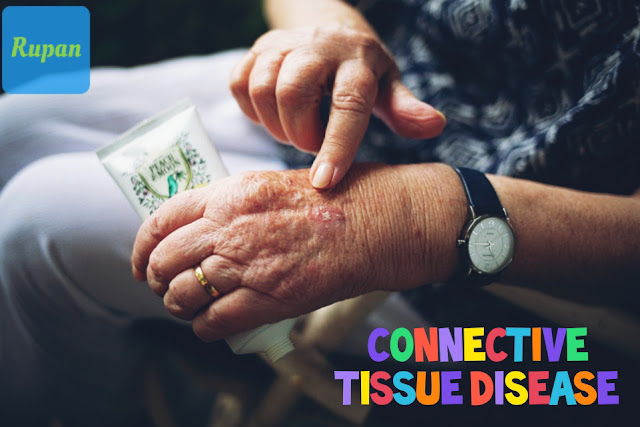Introduction: Connective Tissue Diseases. Your body is held together by the connective tissue in your body. If you have connective tissue disease, these connective tissue are badly affected. Joint tissue diseases include autoimmune diseases such as rheumatoid arthritis, scleroderma and lupus.
What are joint tissue diseases?
Joint tissue is any disease that affects the parts of the body that connect body structures together.
The connective tissue is made up of two proteins: collagen and elastin. Collagen is a protein found in muscles, tendons, skin, cornea, cartilage, blood vessels. Elastin is a rubber band-like protein and is a great builder for muscles and skin. When a patient has connective tissue disease, collagen and elastin become inflamed. The proteins and organs they attach to it are damaged.
What are the different types of joint diseases?
 More than 200 different types of connective tissue diseases are there. They can be inherited, caused by natural conditions, or more often than not, they are an unknown cause. Diseases of connective tissue include, but are not limited to:
More than 200 different types of connective tissue diseases are there. They can be inherited, caused by natural conditions, or more often than not, they are an unknown cause. Diseases of connective tissue include, but are not limited to:Rheumatoid Arthritis (RA): Arthritis is one of the most common connective tissue diseases and can be inherited. RA is an autoimmune disease, which means that the body's immune system attacks its own body. In this systemic problem, immune cells invade and burn the membranes around the joints. It can also affect the heart, lungs, and eyes. It affects more women than men (approximately 71% of cases).
Scleroderma: An autoimmune condition that causes tissue formation in the skin, internal organs (including the GI tract), and small blood vessels. It affects women three times more often than men throughout life, which occurs 15 times more often in women during childbirth.
Granulomatosis and Polyangiitis (GPA, formerly called Wegener's): A form of vasculitis (inflammation of the blood vessels) that affects the nose, lungs, kidneys, and other organs.
Churg-Strauss Syndrome: A form of spontaneous vasculitis that affects cells in the blood vessels of the lungs, gastrointestinal system, skin and nerves.
Systemic Lupus Erythematosus (SLE): A disease that can cause inflammation of the connective tissue in all parts of the body, from the brain, skin, blood, to the lungs. It is 9 times more common in women compare tomen.
Microscopic Polyangiitis (MPA): An autoimmune disease that affects cells in the blood vessels in organs throughout the body. This is an unusual situation.
Polymyositis / dermatomyositis: A disease caused by inflammation and degeneration of muscles. When this condition affects the skin, it is called dermatomyositis.
Myocardial infarction (MCTD), also called
Sharp syndrome: A condition characterized by, but not all, of various tissue diseases, such as SLE, scleroderma, and polymyositis. MCTD may have features of Raynaud's syndrome.
Differentiated connective tissue diseases: Conditions that are characteristic of connective tissue diseases but do not meet the guidelines that will be set for a specific period of time. Some people with these conditions will eventually continue to develop some form of connective tissue disease, but most will not.
What causes tissue-related diseases?
These conditions can be caused by the genes in the family and are often referred to as acquisitions that affect the connective tissue. Communicable tissue diseases can also be caused by organic matter. Non-genetic causes of independent strains of joint tissue diseases may include:
Exposure to toxic chemicals, such as those found in air pollution and tobacco smoke. Ultraviolet light exposure.
Adequate nutrition, including lack of vitamins D and C.
What are the symptoms of connective tissue disease?
Because there are so many types of connective tissue diseases, symptoms can vary and can affect different parts of the body. Affected organs include:
* Bones.
* Members.
* Skin.
* Cardiovascular system.
Lungs- Some diseases, such as those mentioned above, can cause serious lung problems.
Head and face- Some of the diseases can make the face, head, eyes and ears look different than the normal people.
Height- Some diseases cause people to have them too long or too short.
Conclusion: Your body is held together by the connective tissue in your body. If you have connective tissue disease, these connective tissue are badly affected.
What are joint tissue diseases?
Joint tissue is any disease that affects the parts of the body that connect body structures together.
Joint tissue diseases include autoimmune diseases such as rheumatoid arthritis, scleroderma and lupus.
Thank for reading. Keep following- what maybe you don't know about health and politics











1 Comments
Nice. Keep it up ��
ReplyDelete